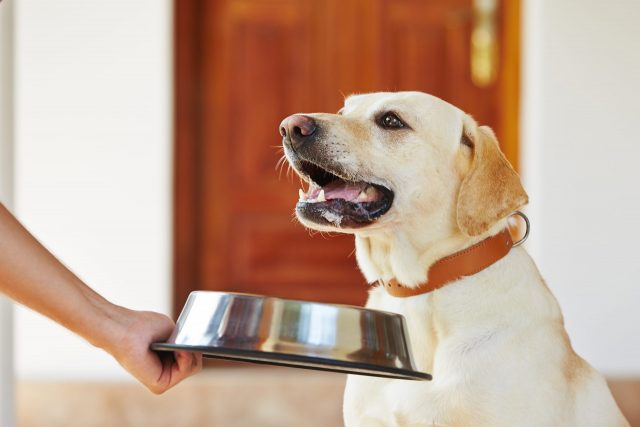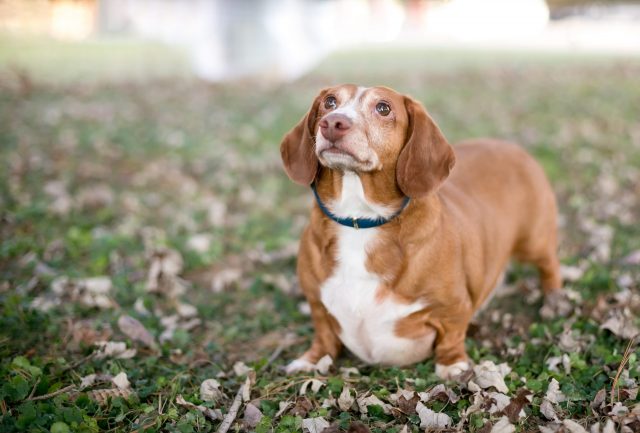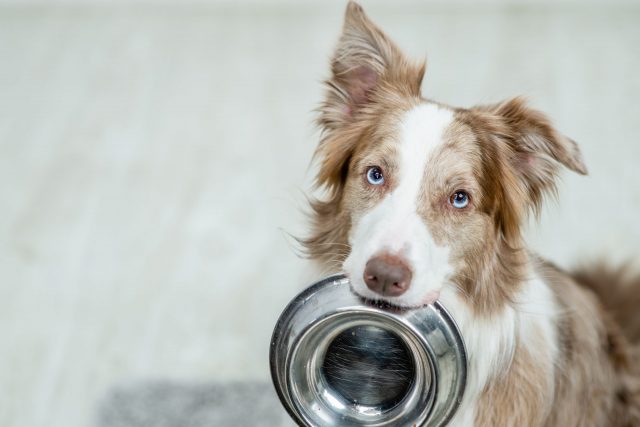iHeartDogs is reader-supported. When you buy via links on our site, we may earn an affiliate commission at no extra cost to you.
Diabetes is a common health concern in dogs, characterized by either a lack of the insulin hormone or an inadequate response to it. While insulin injections are often necessary to manage this condition, diet plays a crucial role in managing diabetes and preventing complications.
What, when, and how much you feed your diabetic dog can really affect their health. So, we’ve provided eight feeding tips that will help you manage your dog’s diabetes, keeping them healthier.
1. High Protein/Low Carb Diet
A high protein/low carb diet can significantly aid in managing diabetes in dogs. High-quality proteins provide essential nutrients without causing a significant rise in blood glucose levels, thus helping to stabilize these levels throughout the day. Also, protein can support lean muscle mass, aiding in weight control, an essential aspect of diabetes management.
On the other hand, a diet low in carbohydrates minimizes sudden spikes and drops in blood glucose levels. Carbohydrates break down into sugars, which raise glucose levels in the bloodstream. Limiting carbohydrate intake can help manage your dog’s blood glucose levels more effectively, contributing to overall diabetes management.

2. No Dry Food
While not all dry dog foods are damaging for dogs with diabetes, many commercial kibble brands can pose a challenge in managing this condition. These products often contain high levels of carbohydrates, which can lead to an undesirable spike in blood sugar levels. Furthermore, some dry dog foods might be low in fiber, a component essential for slowing the absorption of glucose into the bloodstream and promoting feelings of fullness.
Kibble also has less moisture, and good hydration is key for diabetic dogs, as they can often experience excessive thirst. As such, it’s recommended that dog parents consider other food types for their diabetic dogs, such as wet food or fresh food like Ollie.
3. Watch Their Weight
Managing your dog’s weight is crucial in controlling their diabetes. Overweight dogs have a higher risk of insulin resistance, making it harder for the body to manage blood glucose levels effectively. Keeping your dog at a healthy weight can increase insulin sensitivity, improve blood sugar control, and even reduce the amount of insulin your dog may need. Regular exercise combined with a balanced diet can help maintain a healthy weight, ultimately contributing to better diabetes management.

4. Feeding Schedule
Sticking to a consistent feeding schedule is beneficial for diabetic dogs because it helps maintain stable blood glucose levels throughout the day. By feeding your dog at the same time each day, you ensure a steady supply of glucose from the food, which aligns well with the timing of insulin administration. This regularity not only aids in the efficiency of insulin use but also reduces the risk of blood sugar spikes and crashes, which could be detrimental to your dog’s health.
5. Feed Prior to Insulin Injections
When coming up with a feeding schedule for your dog, make sure they’re fed before insulin injections. Feeding your dog before administering insulin helps ensure that there’s a steady supply of glucose entering the bloodstream when the insulin starts to take effect. This helps the insulin work more effectively at processing the glucose.
Also, it reduces the risk of hypoglycemia, a condition that can occur if insulin is given without adequate food intake, leading to dangerously low blood sugar levels.

6. Consistent Diet
A consistent diet is vital for diabetic dogs as it helps maintain stable blood glucose levels. Sudden changes in your dog’s diet can cause fluctuations in blood sugar levels, which can make diabetes harder to manage. Consistent feeding of the same type and amount of food ensures that the glucose supply to the body remains steady. This predictability allows for a more precise adjustment of insulin doses, aiding in effective diabetes management. So, any changes to a diabetic dog’s diet should always be made gradually and under the guidance of a vet.
7. If your Dog Won’t Eat, Call the Vet
If your diabetic dog is not eating, it’s generally advised not to give them their insulin dose. This is because insulin lowers blood sugar levels by helping the body use glucose from food. Administering insulin when a dog hasn’t eaten could potentially cause hypoglycemia, a condition that could be life-threatening.
If you miss more than one dose of insulin because your animal won’t eat, call your vet. There are multiple things that could be going wrong, so it’s better to be safe than sorry.

8. Treat Wisely
It’s hard to say no to a begging dog, but if your pup has diabetes, you need to be extra selective with treats. Look for treats that are low in sugar and high in fiber. That way, they won’t contribute to blood sugar spikes. Then, the fiber can help slow the absorption of glucose and promote a feeling of fullness.
Remember to consider the calorie content of the treats as well, as maintaining a healthy weight is crucial in managing diabetes. Natural options like vegetables can be a good choice, but you may want to talk to your vet to choose treats that are appropriate for your dog’s needs. Also, treats should only make up a small portion of the daily caloric intake, no matter how healthy those treats are.
Choosing Diabetic-Friendly Dog Food
By following the above tips, you can better decide what diet is safe for your dog. As always, talk to your vet before making the switch and keep the transition gradual to prevent digestive issues.
Ollie is a great fresh food brand for dogs with diabetes because of its high-quality, whole food ingredients. Each recipe contains lean proteins, fiber-rich vegetables, and beneficial grains, providing a well-balanced meal. High in protein and low in carbohydrates, Ollie’s meals can help maintain stable blood glucose levels, which is crucial for managing diabetes. Furthermore, the portion-controlled meals can assist with weight management, another important aspect of diabetes control.
If you’re interested in giving Ollie a try, you can get 60% off your first box with the code IHDOGS60!
Dog Product Reviews
- Best Dog Foods
- Best Fresh Dog Foods
- Best Freeze Dried Dog Foods
- Best Raw Dog Foods
- Best Online Dog Training Classes
- Best Fish Oil for Dogs
- Best Multivitamins for Dogs
- Best Invisible E-Fences for Dogs
- Best Grooming Tools for Dogs
- Best Beds for Senior Dogs
- Best Dog Toys
- Best GPS & Tracking Collars
- Best Dog Grooming Clippers
- Best No-Pull Dog Harnesses
- Best Pet Safe Weed Killers
 Toledo, United States.
Toledo, United States.